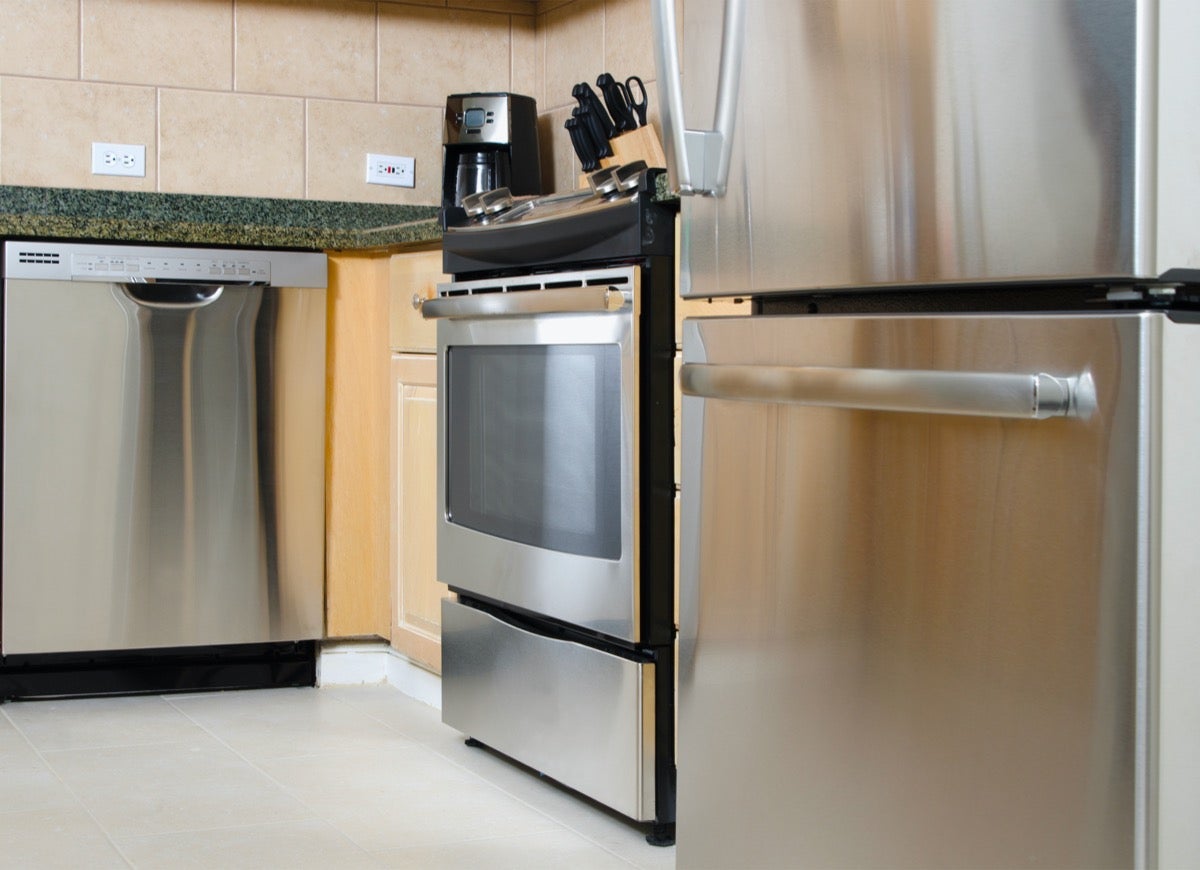

We may earn revenue from the products available on this page and participate in affiliate programs. Learn More ›
Home Advice You Can Trust
Tips, tricks & ideas for a better home and yard, delivered to your inbox daily.
By signing up you agree to our Terms of Service and Privacy Policy.
Maintain Shining Stainless Steel

Stainless steel appliances provide a contemporary polish to your kitchen with their gleaming finish and low-maintenance care requirements. Stainless steel has a naturally occurring film which helps it look great for years. In order to keep your stainless steel appliances in top shape, it’s crucial to maintain this protective layer with regular cleaning. If treated improperly, however, the surface can be scratched, dulled, and worn away. Read on to learn about the mistakes to avoid when cleaning stainless steel.
Cleaning with Abrasive Cleaners

Stainless steel contains iron, chromium, manganese, silicon, and carbon. When these elements interact with the oxygen in the air, they form a thin film that protects the steel from rust and corrosion. Abrasive cleaners wear away at this layer by scratching it and damaging the steel’s natural grain, causing rust over time. Avoid cleaning powders and liquids containing abrasive ingredients like calcite, feldspar, quartz, and silica.
Related: 35 Things You Didn’t Know Your Home Appliances Can Do
Scrubbing Against the Grain

Look closely at stainless steel and you’ll notice fine lines in the material. When cleaning, always scrub, wipe, or polish the surface in the same direction as the grain rather than against it. This helps to clean inside those tiny cracks to remove dirt and dust. Avoid scrubbing against the grain because it can cause the surface to be scratched.
Using Hard Water

Even if you’ve followed all of the rules, you may still notice spotting and staining on stainless steel appliances. If this happens, the culprit may be your tap water. Hard water can leave streaks and stains on stainless steel. To prevent this, be sure to dry the appliances’ surfaces thoroughly using a soft towel after washing. Remove hard water stains with a damp cloth and a little white vinegar.
Using Abrasive Cleaning Tools

While stainless steel is known for its durability, it is prone to scratching. Steel wool and other abrasive cleaning implements can scratch the surface of stainless steel and dull its high-shine finish. Not only that, they can cause the protective film to wear away, leaving the steel susceptible to rust. The best tool to use is a soft microfiber cleaning cloth.
Using Bleach

Bleach is a cleaning staple in many households, but it doesn’t pair well with stainless steel. The chemical reaction between bleach and stainless steel can cause dulling and can even eat away at the metal. Be sure to confirm that cleaning products are free of bleach before using them on your stainless steel sink or appliances.
Letting Dirt Sit

Always clean stainless steel appliances as soon as you notice dirt or grime settling on the surface. If allowed to dry, dirt will be harder to remove and may require harsher cleaning tools or harder scrubbing, which can dull the surface. Use a damp paper towel or microfiber cloth to clean up spills shortly after they occur.
Related: 35 Things You Didn’t Know Your Home Appliances Can Do
Skipping Rinsing

Cleaning products may leave a residue behind, which can stain the finish. After washing stainless steel appliances with either a commercial or DIY cleaning solution, always rinse the surface with clean water. Simply dampen a microfiber cloth and run it over the surface to ensure no cleaning solution remains.
Ignoring the User Manual

While there are a number of universally applicable rules to apply when cleaning stainless steel appliances, manufacturers may also provide specific care instructions for their products. Some appliances feature a clear-coat finish, and there may be specific guidelines for how to care for it properly. Always check the user manual to ensure your appliance doesn’t have any additional restrictions when it comes to cleaning.
Related: How To: Clean Stainless Steel

This Is the Year for a Kitchen Renovation
Whether you’re selling or staying, everyone can get something out of a kitchen update. Learn why we consider this renovation the Most Valuable Project of 2025 and how to stay on budget.